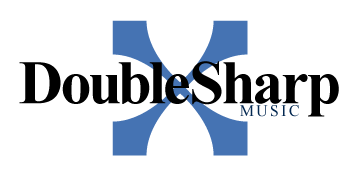top of page


The Different EQ bands and What they mean
Throughout my blog series on EQs I am going to refer to the free EQ plugin that comes with Pro Tools, the Digirack EQ III 7-band. First,...
Timothy Wheeler
Dec 4, 20203 min read


EQ Overview and Introduction
In the next series of blog posts, I’m going to go through EQ, or equalization. I will talk about why we use it, and when and how to use...
Timothy Wheeler
Nov 29, 20204 min read


Compression Dos & Don’ts
To wrap things up regarding compressors, I will offer 3 Dos and Don’ts as my final word for now. These are things to always keep in mind...
Timothy Wheeler
Nov 23, 20201 min read


Compressors – What is the Knee and What does it do?
As you get better with compressors, you will start playing with other knobs and features. One of these is the knee. The knee refers to...
Timothy Wheeler
Nov 12, 20201 min read


6 Recording Myths – Busted!
It is hard to learn how to record and mix music today. With so much information available on the web, sometimes it is hard to know if the...
Timothy Wheeler
Oct 13, 20204 min read


Compressors 101 – the Basics (part 1)
Compressors seem to confuse a lot of people in the beginning, they certainly did me! Here is some helpful information concerning using a...
Timothy Wheeler
Oct 12, 20202 min read
10 Tips for a great vocal recording
Here are ten quick tips to think about the next time you record vocals: 1) Warm Up: Every vocalist needs to warm up. You wouldn’t run...
Timothy Wheeler
Oct 12, 20203 min read
Organization Pt. 3 (patchbays)
Patchbays Having a patchbay helps to optimize your signal routing and organization. Even the most modest of studio setups can benefit...
Timothy Wheeler
Oct 12, 20203 min read
Organization (in your Production Studio) Pt. 2
Group Cabling Keep cables grouped together by type (audio, MIDI, mains, etc.). This makes it easier to find faulty cables, patch...
Timothy Wheeler
Oct 12, 20202 min read
Timebase in Pro Tools
In Pro Tools, material (audio or midi) on a track is associated with a type of Time Scale. All track types can be set to either...
Timothy Wheeler
Oct 12, 20201 min read
Recording from sound modules without effects
If you’re involved with a lot of production work and do a lot of MIDI work like I do, you record a lot of projects using your sound...
Timothy Wheeler
Oct 12, 20202 min read
Unmount hard drives from within Pro Tools
Have you ever tried to eject a hard drive from your system that you used in a Pro Tools session while Pro Tools was still up and running?...
Timothy Wheeler
Oct 12, 20202 min read
Unmount hard drives from within Pro Tools
Have you ever tried to eject a hard drive from your system that you used in a Pro Tools session while Pro Tools was still up and running?...
Timothy Wheeler
Oct 12, 20202 min read
Demystifying Pro Tools Preference Settings part 3/3
OK today let’s first go over the Editing tab. There’s really only one item I want to make sure you know about. At the bottom of the page...
Timothy Wheeler
Jan 24, 20182 min read
Demystifying Pro Tools Preference Settings part 3/3
OK today let’s first go over the Editing tab. There’s really only one item I want to make sure you know about. At the bottom of the page...
Timothy Wheeler
Jan 24, 20182 min read
Demystifying Pro Tools Preference Settings part 2/3
In the last blog post I covered the first tab under pro tools preferences – Display. Today I will cover Operation Preferences. First...
Timothy Wheeler
Jan 24, 20182 min read
Demystifying Pro Tools Preference Settings part 2/3
In the last blog post I covered the first tab under pro tools preferences – Display. Today I will cover Operation Preferences. First...
Timothy Wheeler
Jan 24, 20182 min read
Demystifying Pro Tools Preferences part 1/3
I remember how terrified I felt going to the Preferences (under Setup) tab! I looked at all that and said “Maaann! I am NOT touching...
Timothy Wheeler
Jan 24, 20182 min read
Demystifying Pro Tools Preferences part 1/3
I remember how terrified I felt going to the Preferences (under Setup) tab! I looked at all that and said “Maaann! I am NOT touching...
Timothy Wheeler
Jan 24, 20182 min read


Stay organized by colorizing the tracks in Pro Tools
To help stay organized in Pro Tools, I colorize my tracks, MIDI channels, and sometimes regions. My master fader is always one color, the...
Timothy Wheeler
Jan 24, 20182 min read
bottom of page
